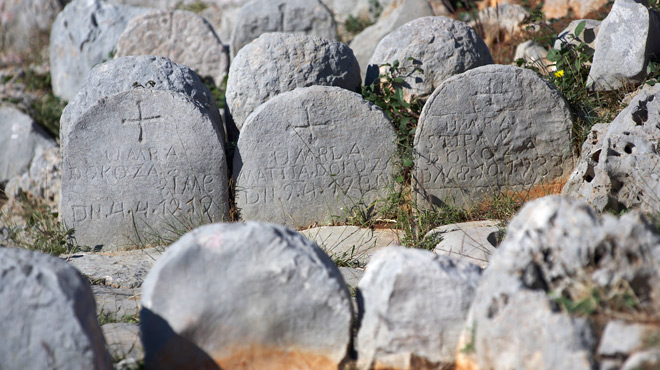About Mirila

Mirila, stone monuments to the departed, can be found along the mountain paths, passes, elevations and clearings of Mt. Velebit. Mirila date from the times of the Velebit hamlets (17th– 20th centuries), that mainly survived from animal husbandry. They preserve the memories of persons who died on the mountain slopes and had to be carried to the village church and then to the cemetery where they were buried. On such arduous journeys, it was only permitted to stop, rest and place the deceased on the ground in one place - the place where the deceased would greet the sun for the last time.
On this place was erected a mirilo, the resting place of the deceased. Flat stone tablets were generally laid at the head and foot of the deceased, marking his height, to be connected at a later date by a row of stone tablets. The headstones were also sometimes subsequently adorned with symbols carved in shallow relief.
These mirila were venerated and visited more than graves, as it was believed that the grave only contained “the body without the soul, which remained at the mirilo.”
Mystical artistic markings on the headstones, among which the cross and solar circle were the most common, bear witness to a continuity of artistic adornment from prehistoric cultures, via early Christianity and the iconography of the stećak (medieval Bosnian standing tombstone), while inscriptions are rare and belong to more recent times. As the stone markers of a unique funeral cult, mirila convey the customs, way of life and creativity of an entire era.